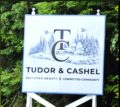General News
South Algonquin discuss area’s LDD moth infestation
March 22, 2022
BY MICHAEL RILEY
Local Journalism Initiative Reporter
At their meeting on March 2, South Algonquin Township council briefly discussed the infestation of the Lymantria dispar dispar moth (formerly known as the gypsy moth) in South Algonquin and North Hastings. South Algonquin council got a letter from the Minister of Northern Development, Mines, Natural Resources and Forestry Greg Rickman, as well as an information brochure all about LDD moths and how to deal with their infestation, that can be shared with the township’s residents. Council decided to further review and file these documents for information purposes.
The Entomological Society of America removed gypsy moth as the recognized common name of this invasive species in July, 2021, as it was offensive and it will now be called the LDD moth. It was brought to North America from Europe in 1869 and once they escaped into the wild, they made their way into Ontario 100 years later. The larvae or caterpillars feed on the crown foliage of a myriad of hardwood and some softwood trees, making its defoliation practices quite destructive.
The brief discussion on the LDD moth infestation at the South Algonquin Township council meeting on March 2 arose from a letter sent to the municipality by the Minister of Northern Development, Mines, Natural Resources and Forestry Greg Rickman on Feb. 18, in which he acknowledged that some parts of Ontario are currently experiencing LDD moth outbreaks of varying severity.
Mayor Jane Dumas introduced the information items on the LDD moths, including Rickman’s letter and the information package the NDMNRF had sent.
“Anyways, the information was provided and you can go on through that information on the map and see where the moths are currently. The Bancroft area was getting them last year and the NDMNRF are expecting that this year will be another year of the LDD moths. Just information there for municipalities and individuals,” she says.
Councillor Joe Florent interjected and said that the moths had been in South Algonquin too.
“They were not as concentrated as some other areas, but they were,” he says.
As for other areas locally, that have been hard hit by the moths, Bancroft district had high numbers of the moths, having moderate to severe concentrations, according to the NDMNRF 2021 LDD moth egg mass survey results. Further south, another of these affected areas, Limerick Township, was so hard hit that they passed a motion at their Jan. 17 meeting regarding LDD moth concentration and control measures. They said that with Limerick having reportedly the highest concentration of moth infestation and that reported responses from the public not relaying that accurately due to the township’s small population, they asked that Hastings County not only take into account reporting of the moths, but also consider the land mass of each municipality to determine the actual impact of the moths’ devastation. They asked that the county take into account this geographical representation in addition to the online reporting “to ensure accurate and beneficial spraying to combat this problem is undertaken.”
The LDD moth is a regulated pest by the Canadian Food Inspection Agency. Severe moth infestations occur every seven to 10 years and usually last three to five years. The moths’ destructive defoliation occurs in the spring and early summer, leaving the trees they’ve fed on looking nearly dead. They feed on both hardwood and softwood trees, and while hardwoods can produce a second crop of foliage during the growing season, they are better off than the softwoods, who cannot and may be impacted more. According to the NDMNRF, healthy trees can withstand a few seasons of severe defoliation before branch and twig dieback tree mortality occur due to damage from secondary pests, drought and poor growing conditions. The moths’ defoliation increased from 586,385 hectares in 2020 to nearly 1.8 million hectares in 2021.
The LDD moth has over 300 known host plant species, 150 of them they prefer, according to the Ontario Invasive Species Centre at invasivespeciescentre.ca. Some of these preferred host tree species include oak, maple, birch, alder and hawthorne. A single larval LDD moth or caterpillar can consume an average of one square metre of leaf material over its life.
According to Rickman’s letter, last year the NDMNRF conducted aerial and ground surveys to map moth damaged areas and to forecast defoliation for 2022. The results of these surveys conclude that this year will be another bad year for LDD moth defoliation, causing moderate to severe damage, while other areas are forecasted to receive lighter levels of defoliation than in previous years. While continuing to monitor the moth through its outbreak cycle, Rickman stressed that the province only conducts pest management on Crown lands and any infestation on private lands are the responsibility of individual property owners or the municipalities they live in.
Rickman says that the NDMNRF and the Ontario Invasive Species Centre offer resources and information to help blunt the impact of the LDD moth.
The NDMNRF suggests the following methods to negate the destruction wrought by the LDD moth;
• Banding burlap around trees in the spring and when the larvae attach themselves to it, the burlap and the larvae can be disposed of
• Removing and destroying egg masses in the fall by scaping them off the trees and putting them in a bucket of soapy water
• Landowners can have their trees sprayed with Bacillus thuringiensis kurstaki in the spring by a licenced insecticide application company and coordinating the effort with other local landowners, although due to heavy demand the NDMNRF advises landowners to set this up early in the
season
Rickman also detailed some natural controls on LDD moth populations in the province. These include; moth population collapse if conditions are cool and wet enough to spur a natural fungus (Entomophaga maimaiga), a viral infection called NPV or nuclear polyhedrosis kills LDD larvae, and several natural enemies of the LDD moth like parasitic insects and predatory animals. There is a fact sheet available to municipalities and homeowners at www.ontario.ca/page/lymantria-
dispar-dispar-ldd-moth, residents can contact the municipality where they live, the Ontario Invasive Species Centre (www.invasivespeciescentre.ca), the Ontario Federation of Anglers and Hunters Invading Species Awareness Program (www.invadingspecies.com) or the NDMNRF by emailing info.mnrfscience@ontario.ca for more information and assistance.




















